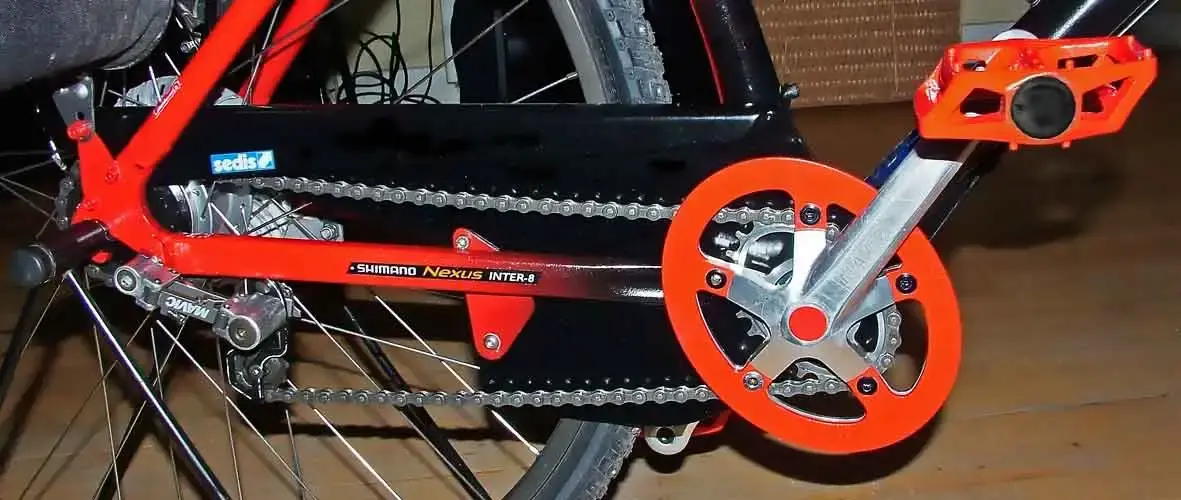- Feedback
- View
DoctorRad said:
It looks the other way around to me. Set on 'No skidding' as it is, and looking at how much the inner ring teeth are overlapping the five 110 BCD bolts, I'd say that the ring was orientated with its long axis almost parallel to the crank arm. This is the opposite of EggRing orientation:
That's an interesting point DoctorRad.
As you point out, the photo of the chainset shows the inner ring in Biopace mode. The "maxi force" or maximum leverage position.
The question is what do the instructions say?
If they say "align the arrow to the crank", as DoctorRad is presuming, they do not make sence.
If they say "align the arrow at 90 degrees to the crank." The terms
"no skidding" and "maxi force" do match the relative leverages (mechanical advantages) being applied to the rear wheel during the power stroke.
